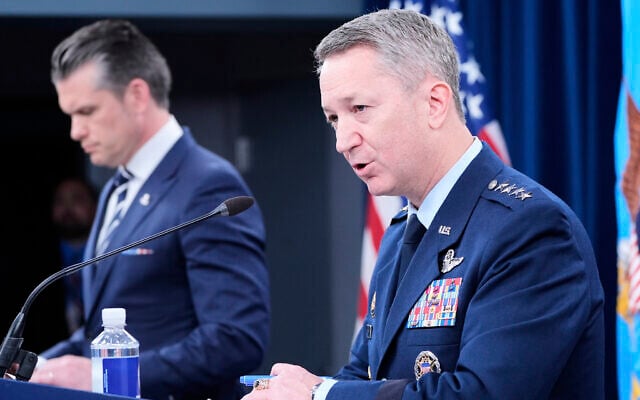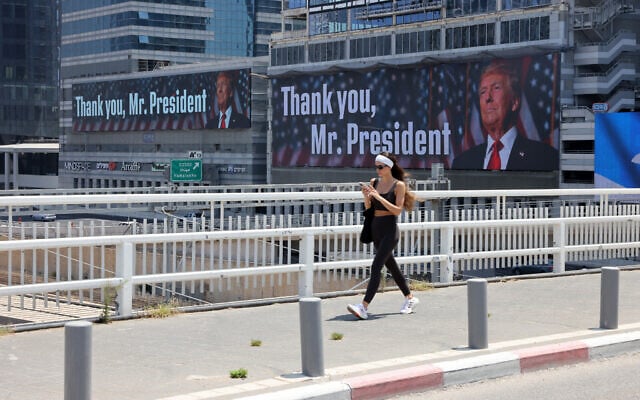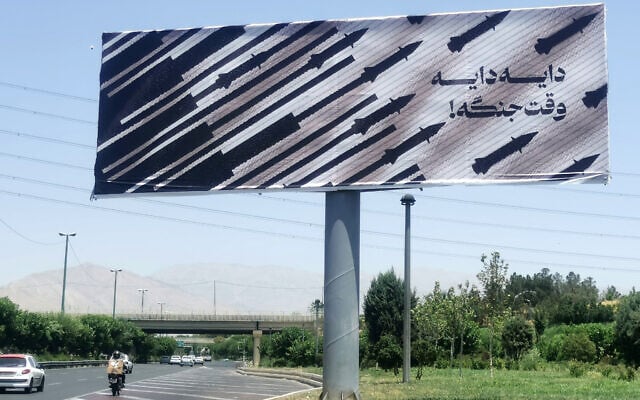


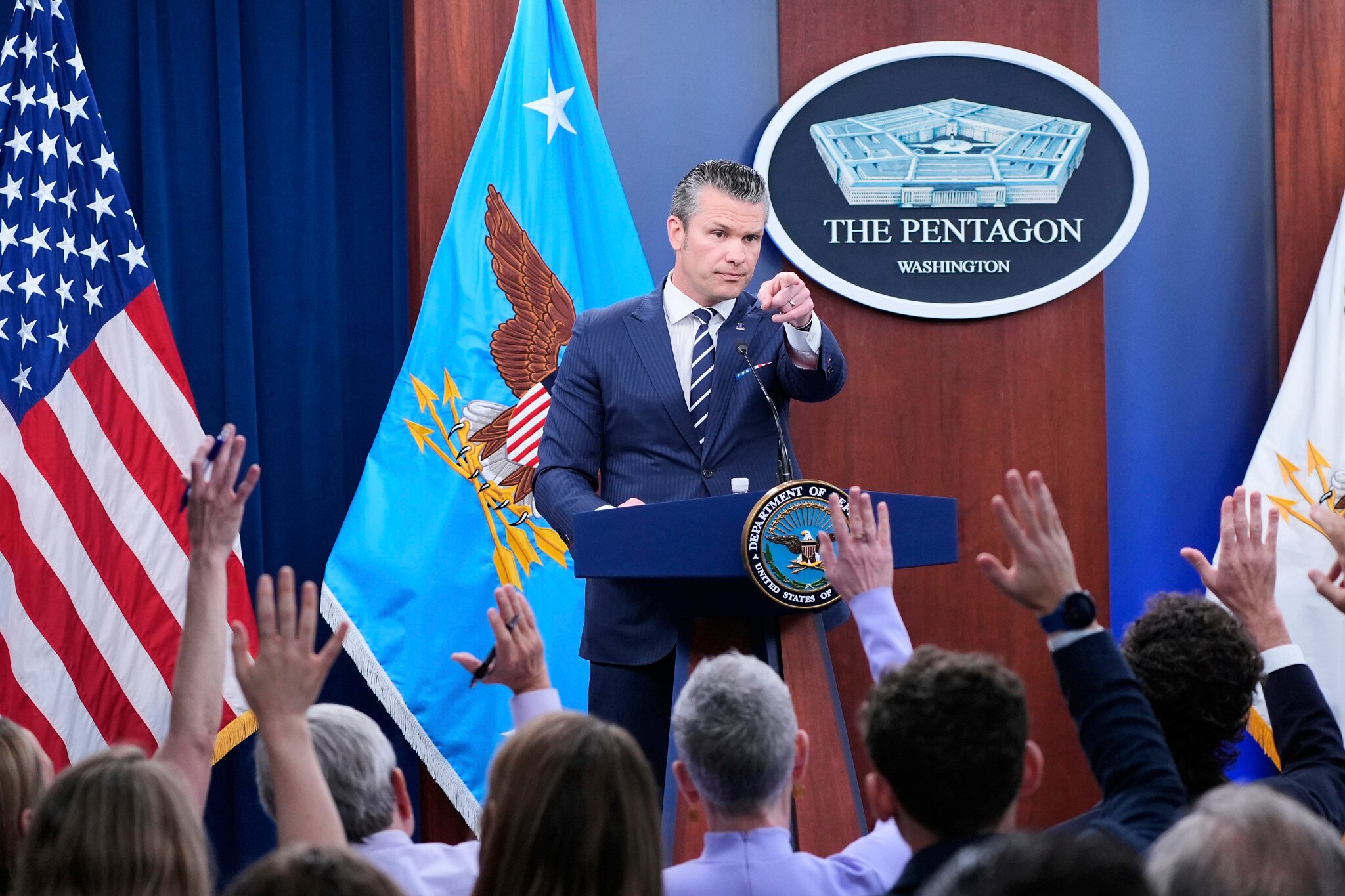
US Defense Secretary Pete Hegseth said on Sunday that US military strikes against Iranian nuclear facilities were an incredible and overwhelming success that “obliterated” Tehran’s nuclear ambitions.
As Washington warned Tehran against responding to the strikes, Hegseth also said that the US did “not seek war” with Iran or regime change, that the strikes were “international limited” to Iran’s nuclear facilities, and that the regime should now negotiate peace.
The US strikes employed 14 bunker-buster bombs, more than two dozen Tomahawk missiles and over 125 military aircraft, in an operation the top US general Dan Caine, chairman of the Joint Chiefs of Staff, said was named “Operation Midnight Hammer.”
The strikes targeted three nuclear facilities, most notably the deep underground Fordo site, which necessitated the use of massive, earth-penetrating bombs that Israeli jets cannot carry. Also targeted were the Natanz and Isfahan nuclear facilities, which according to the Pentagon were hit by submarine-launched cruise missiles.
The operation came after more than a week of strikes by Israel that damaged Iran’s nuclear facilities, eradicated the country’s air defenses, and took out many of its military brass and top nuclear scientists.
Iran, in retaliation, has launched dozens of ballistic missile barrages at Israel. Two volleys fired a few hours after the US joined the campaign caused widespread destruction in several locations in central Israel and the Haifa area.
“Iran’s nuclear ambitions have been obliterated,” Hegseth told a Pentagon press briefing,
“We devastated the Iranian nuclear program,” Hegseth said, adding that the operation “did not target Iranian troops or the Iranian people.”
Speaking after the secretary, Caine said the initial assessment was that “all three sites sustained extremely severe damage and destruction.”
Also speaking on Sunday, Vice President JD Vance told NBC News that the strikes “destroyed the Iranian nuclear program, I think we set that program back substantially,” but specified that the US is “not at war with Iran, we’re at war with Iran’s nuclear program.”
“No other country on planet Earth” could have conducted the operation, Hegseth added.
Israel, he noted, has had “incredible” military success — at the beginning of its attacks “and ongoing” — in degrading Iranian capabilities. He said it has been “incredible to watch what our ally Israel has been able to do.”
“Part of this operation was the defense of Israel, and the ongoing defense of Israel,” Hegseth said.
Hegseth said the operation involved considerable advance planning, “misdirection” and security, and that the US bombers went “in and out without the world knowing.”

He added that the attacks marked the “first operational involvement” of the MOP (Massive Ordnance Penetrator), the huge 30,000-pound bunker-busting bombs that only US planes can carry.
The use of the heavy ground-penetrating bombs was seen as a key element in causing significant damage to Iran’s Fordo nuclear facility, buried deep under a mountain west of Tehran.
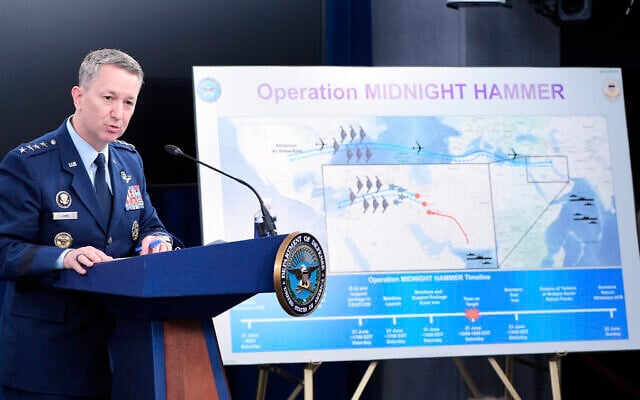
Caine said the goal of the operation — destroying nuclear sites in Fordo, Natanz and Isfahan — had been achieved.
“Final battle damage will take some time, but initial battle damage assessments indicate that all three sites sustained extremely severe damage and destruction,” Caine said.
Caine said the “main strike package comprised of seven B-2 Spirit bombers” flying 18 hours from the US mainland to Iran with multiple aerial refuelings.

“Iran’s fighters did not fly, and it appears that Iran’s surface to air missile systems did not see us throughout the mission. We retained the element of surprise,” Caine added.
Caine said the deployment of US bombers over the Pacific yesterday was a “decoy,” part of a wider deception effort known to only a limited number of the operation’s planners.
A Pentagon-provided map of the flight path taken by B-2 stealth bombers indicated that their approach to Iran took them over the Mediterranean and then over Israel, Jordan and Iraq.
It is not immediately clear when those three countries were made aware of the flights. Israel has said the US strikes were carried out in coordination with its military. The US said the strikes did not involve Israeli jets.
Iran said following the attacks that it did not detect the leak of any nuclear material.
“There is no danger to the people living on the outskirts of our nuclear areas,” spokeswoman Fatemeh Mohajerani said on state television. “The people of Natanz, Isfahan and Fordo can continue their lives.”
Earlier, US President Donald Trump said Washington would hit more targets if Tehran did not capitulate.
Hours later, Iran launched two waves of attacks against Israel.
“Iran the bully of the Middle East must now make peace,” Trump said, warning future attacks would be “far greater” unless a diplomatic solution was reached.
“Remember, there are many targets left,” he added.
Iranian Foreign Minister Abbas Araghchi told reporters in Istanbul the United States and Israel had “crossed a very big red line,” asserting Iran would continue to defend itself “by all means necessary.”
But Hegseth offered the Iranians an off-ramp, saying that Trump “seeks peace, and Iran should take that path.”
“This mission was not, and has not, been about regime change,” he added. “The president authorized a precision operation to neutralize the threats to our national interests posed by the Iranian nuclear program and the collective self-defense of our troops and our ally Israel.”
“I would just say, as the president has directed and made clear, this is most certainly not open-ended,” and that “the scope of this was intentionally limited.”
However, “the capabilities of the American military are nearly unlimited,” Hegseth added, and thus Iran should “take the path of negotiated peace.”
The US has made clear to the Iranians, he said, that “this was about nuclear sites, nuclear capabilities.”
Hegseth hailed US overall coordination with Israel, but said “this strike was US-operated and US-led.”
Israel, he noted, has had “incredible” military success — at the beginning of its attacks “and ongoing” — in degrading Iranian capabilities. He said it had been “incredible to watch what our ally Israel has been able to do.”
“Part of this operation was the defense of Israel, and the ongoing defense of Israel,” Hegseth said.
Caine added that the US strikes “took advantage of some of the preparatory work that’s been done over the past week and a half in terms of access and approach” and that “we made sure we were not in the same piece of air space and sky” as Israel.
Israel says its sweeping assault, which began last Friday, on Iran’s top military leaders, nuclear scientists, uranium enrichment sites, and ballistic missile program is necessary to prevent the Islamic Republic from realizing its avowed plan to destroy the Jewish state.
Iran, which avowedly seeks Israel’s destruction, has consistently denied seeking to acquire nuclear weapons. However, it has enriched uranium to levels that have no peaceful application, has obstructed international inspectors from checking its nuclear facilities, and expanded its ballistic missile capabilities. Israel says it has recently taken steps toward weaponization.
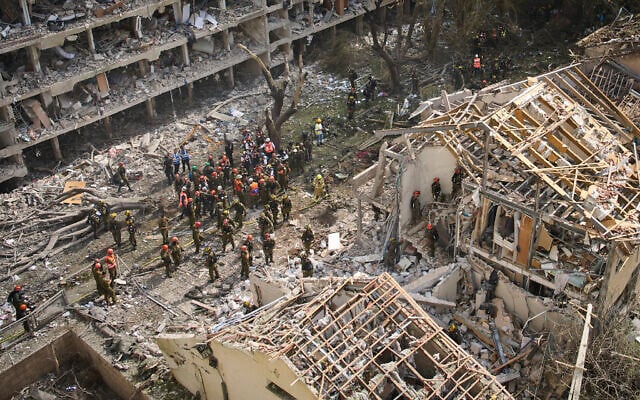
Iran has retaliated by launching over 500 ballistic missiles and around 1,000 drones at Israel.
So far, Iran’s missile attacks have killed 24 people and wounded thousands in Israel, according to health officials and hospitals. Some of the missiles that have not been intercepted by Israeli air defenses have hit apartment buildings, a university and a hospital, causing heavy damage.

